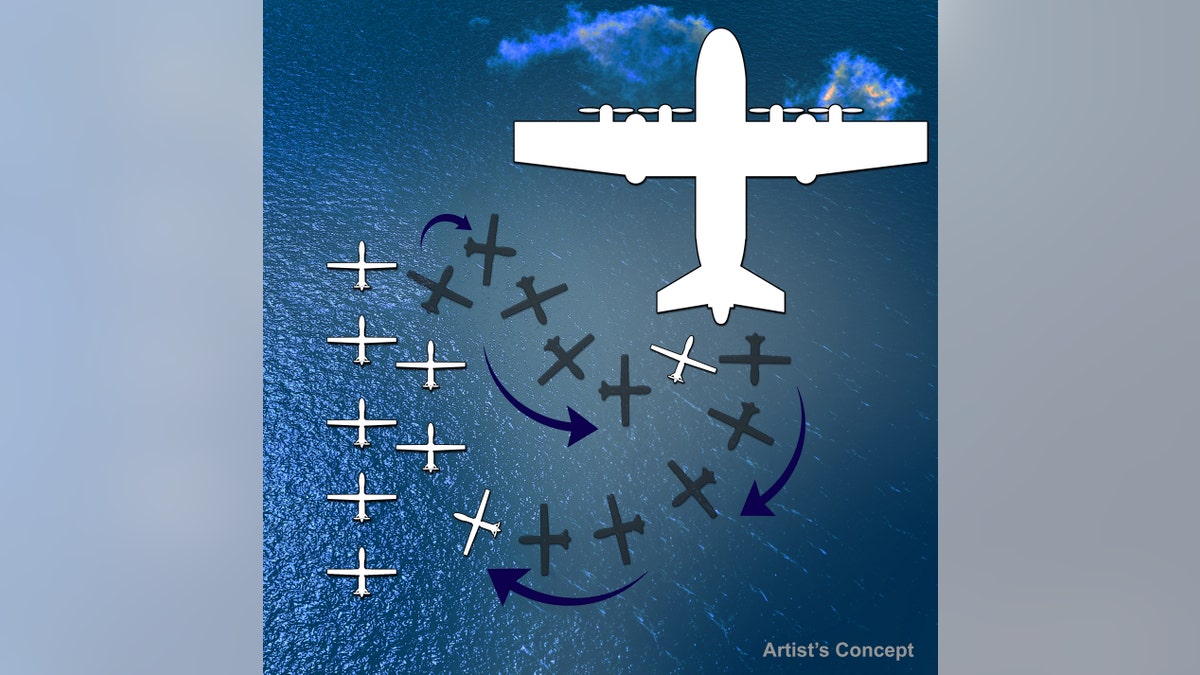
Artist's concept. (DARPA)
Could an "Avengers"-style Helicarrier soon become a reality for the U.S. military?
Essentially aircraft carriers that can fly, Helicarriers featured in Marvel’s 2012 movie “The Avengers,” and, more recently, in “Captain America: The Winter Soldier.”
The Helicarrier serves as an airborne base for S.H.I.E.L.D., as well as a landing and takeoff platform for aircraft.
DARPA, home to many of the military’s real life Tony Stark-style innovators, has issued a request to the public for ideas to help create “aircraft-carriers in the sky.”
Outreach to non-traditional contributors like this is called a Request For Information (RFI), and aims to accelerate and enhance development of cutting-edge projects. Welcoming unconventional contributors is smart way to rapidly create “leap-ahead” tech.
Rather than building a helicarrier-type craft from scratch, the initiative focuses on taking current large aircraft, like the C-130 transport plane, and transforming them into a sort of flying aircraft carrier.
Unmanned air systems, often called drones, would be carried, launched from, and land on these flying carriers.
DARPA is also interested in technologies that could potentially enhance manned and unmanned aircraft as well.
Why helicarriers?
So why would the military be interested in creating flying aircraft carriers?
U.S. manned aircraft are very often essential to military missions. However, deploying them means putting expensive aircraft at risk. More importantly, it also puts U.S. pilots at risk.
Dispatching small, unmanned, aircraft would reduce these risks, although drones lack the speed, endurance and range of larger aircraft.
The solution? Utilize large aircraft to support the deployment of smaller unmanned ones. The larger aircraft can carry its smaller counterparts, providing the necessary speed, endurance and range.
The unmanned aircraft could deploy on a range of missions, such intelligence, surveillance and reconnaissance (ISR). A flying carrier would also enable long-distance operations.
In areas where the U.S. does not have access to airfields, an Avengers-style flying carrier would be a fantastic option for deploying the drones.
Achieving this will require lots of smart innovation, such as next-generation launch and recovery concepts for the drones.
Precision relative navigation, which is already used by the military, lets multiple aircraft to coordinate flight activities. However, a real-life flying aircraft carrier that can deploy drone squadrons will likely require advances in this area.
And rather than incur the cost and delays of starting from scratch, DARPA has proposed the very efficient approach of minimal modification to existing large aircraft.
To help deliver the ambitious DARPA program, the RFI includes a request for proposals that achieve full-system flight demonstrations within just four years.
Responses to the RFI are due Nov. 26.
Deploying from air, land and sea
In December 2013, U.S. Naval Research Laboratory with funding from SwampWorks at the Office of Naval Research and the Department of Defense Rapid Reaction Technology Office took an innovative approach to launching drones via a carrier platform - a submerged submarine.
Remarkably, the flying drone was launched by flying out of a Tomahawk missile tube. As it deployed, its wings unfolded origami-style.
Called the XFC, or eXperimental Fuel Cell, the drone is all-electric and fuel cell-powered, designed to deploy specifically from a submarine under the water.
Fully autonomous, it can perform missions for more than six hours.
The XFC was fired from the torpedo tube on the USS Providence using a 'Sea Robin' launch vehicle system. The Sea Robin launch system is designed to fit within an empty Tomahawk launch canister.
The drone’s take off system lifts it vertically out of its container. This design means that the drone could also potentially be launched from a pickup truck or small surface vessel.
The four-year concept to demonstration proposed for the flying aircraft carrier is a rapid timeline. However, the XFC team managed to get from concept to fleet demonstration in less than six years.
The military has also demonstrated another example of Tomahawk/drone collaboration. Small drones can spot and track threats and then communicate with the missiles, re-directing the Tomahawks during flight to precisely hit targets.
Ballet dancer turned defense specialist Allison Barrie has traveled around the world covering the military, terrorism, weapons advancements and life on the front line. You can reach her at wargames@foxnews.com or follow her on Twitter @Allison_Barrie.
